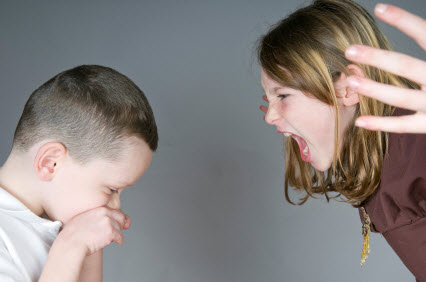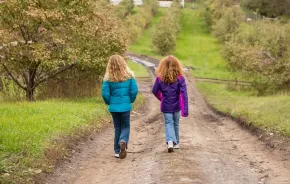 Stopping bullies at school, at home and in the community is extremely important, but we shouldn’t see every act of cruelty as abuse.
Stopping bullies at school, at home and in the community is extremely important, but we shouldn’t see every act of cruelty as abuse.
Reports of new research related to sibling abuse has created a lot of buzz among families wondering if the cruelty they observe among their children constitutes harm that will last a lifetime.
Like many newly recognized syndromes, there could be a downside to the raised awareness about the psychological consequences of sibling aggression. Recognition of bullies at school, at home and in the community is extremely important, but we shouldn’t see every act of cruelty as abuse.
If we muddy the definitional waters, we run the risk of identifying some children as abusers who need better behavioral management, not labels that may lead to self-fulfilling prophecies. In the rush to condemn the Lord of the Flies, the goal of understanding the plights of children may be lost in the shuffle.
In fact, a recent article declared that publishers are reveling in the business of books on youthful cruelty. Is bully talk becoming the Next Big Thing?
Sibling abuse is a serious problem, with some studies indicating that it is the most common form of family violence and that it results in greater anger, depression and anxiety among the victims. Attention must be paid — to the true bullies and victims.
Bullies torment their victims regularly in a pattern of physical aggression, threats, humiliation, intimidation and/or verbal cruelty. If this pattern exists among siblings, parents must take action.
Siblings can be nasty beasts. As a psychologist, I find myself explaining this phenomenon to anguished parents who “just want their children to be friends,” or at least learn self-control or civility.
I refer to siblings as “garbage cans of the universe.” Kids find it exhausting to put up with the demands and expectations of parents, teachers and friends. It is trying for siblings to share mommy and daddy, resources and space with each other. Younger siblings — especially the really cute, perfect or quirky ones — can be highly irritating. For all of these reasons, frustrated (or troubled) children can dump their bad moods on vulnerable siblings, with cruelty, contempt and malevolence.
So when does sibling nastiness constitute abuse? Look for the pattern, wounds and chronicity.
But also look at family dynamics and temperament for an understanding of how some of these patterns develop. Let’s say there is a boy who struggles in school and has temperament challenges with irritability, impulsivity and frustration intolerance, and he has a younger sister who is easygoing, adaptable, and does well at school.
Over time, the boy will get more negative responses from the world than the sister, while she will be racking up more positive ones. Do the math. The boy will feel badly about himself and resent the sister for how good she’s got it and how the parents favor her. The parents may argue this point, but the math will reveal that the sister receives a hundred times as many compliments, smiles and affirming responses as the brother — per week.
What can prevent the slip from occasional meanness to brutality? Parents need to champion the strengths of temperamental, academically challenged kids, check their mean moves, and avoid comparing children. They also need to acknowledge and enjoy the positive attributes of their easier kids in ways that don’t offend and hurt more challenged siblings.
Many other family patterns can result in sibling abuse, including parental mental illness, neglect, and their own patterns of aggression. Even popularity and social status have been linked with bullying, so power plays among children can come from many brews.
Siblings can also be best friends. What fortunate individuals! Again, look at temperaments, family dynamics and circumstances to explain this exquisite bonus in life.
Social cruelty exists on a continuum — at school, on the streets or in the home. In the home context, one child may be a true bully, and the family may therefore need parenting help and professional intervention. But short of a tormenting, destructive pattern, the youngster may be moody and prone to taking it out on a vulnerable sibling. In this case, parents would do well to help the moody child develop coping skills and make sure both kids are getting adequate TLC, because jumping to a bully diagnosis may do both children harm.
Let’s hope the bully awareness movement can result in a nuanced understanding of the needs and plights of children, not just blaming the victims — even the bully will benefit more from help than demonization.
 About Laura S. Kastner, Ph.D.
About Laura S. Kastner, Ph.D.
Dr. Kastner is co-author of a number of parenting books, including the acclaimed Getting to Calm: Cool-Headed Strategies for Parenting Tweens and Teens and Wise-Minded Parenting: 7 Essentials for Raising Successful Tweens + Teens. She is a clinical associate professor of psychiatry and behavioral sciences at the University of Washington.









